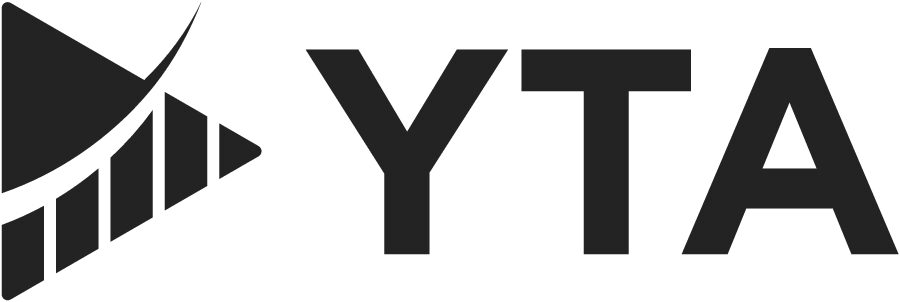Business
YTA Review: The Art of Smart with Caleb Maddix

20 years ago, Bill Gates said: “Content is King”, and his words are more relevant today than ever before.
Platform giants like YouTube, Facebook, and Twitter have emerged as dominant forces in today’s mediated world, giving rise to a new world economy that is increasingly dependent on the users’ generation of content.
Amid the new social order, the explosive growth of video marketing through YouTube is undeniable.
Yet YouTube’s potential for generating passive income remains an enigma for many still.
So we’ve delved deep into the most lucrative strategy to bring you all the tips and tricks!
“Vision Trumps All Other Senses”
In 2014, psychologist John Medina demonstrated that people retained just 10% of the text they read and about 65% of the video they viewed. Marketers have been leveraging the same insight since 2005 when Youtube was first launched. And today, many consider the year 2021 to be all about video.
Every minute, 500 hours of video are posted to YouTube, which are seen by over 1 billion people — one-third of all internet users on the planet.
Millions of dollars are being poured into advertising videos since there appears to be no genuine success without it. As an investor, you must understand to what extent your efforts are translatable into measurable results. This is when the YTA approach comes to your aid.
What is the YTA Method All About?
Many of us find it challenging to be consistently creating content for YouTube. This might be due to a lack of time, interest, or competence, among other things. Another concern many have is the minimum of 4000 hours of viewed material needed to monetize their channel. But what if I told you that you could generate money via your YouTube channel in a matter of days, without ever having to create a single video, let alone appear in them?
The Faceless Youtube Automation method enables you to outsource the entire creative process of video-making to experienced freelancers, so that you don’t have to come up with the content yourself, thereby converting your channel into an automated money-making machine.
Back in 2016, Caleb Maddix, a bright 19-year-old with a keen eye for detail and perfection, co-founded the company YTA (YouTube Automation) to dedicate himself to improving lives through this brand new, lucrative strategy.
YTA pampers its users with the best Faceless YouTube Automation service in the world, combining creativity and expertise to provide a safe environment specially designed to render your money-making quest almost effortless.
Just imagine: you have a personal salesperson who works 24/7 and doesn’t ask for a salary! YTA aims to guarantee this very personal salesperson who works for you round the clock. All that is needed is a reasonable investment to begin with.
What Makes YTA Cost-Effective?
No rule says you should invest in the YTA method, and to be honest, your channel will probably survive without it. But, do you want it to survive and not flourish?
Let us look at some quick stats from the company:
– Over 125 active partners/investors.
– 140+ person team creating 500-700 videos daily.
– Guaranteed instant monetization for every single investor (meaning investors start seeing returns on their very first video).
– Investors earning well over $12,000,000 per year.
– Videos reached over 1 billion persons last year alone, and they are on track to getting 2-3 billion views this year.
YTA’s competent team can guide you through state-of-the-art strategies and help you develop a plan aimed at the best results. By allowing you to develop an interactive personality and an authentic voice that shines through the carefully crafted videos, all that you have to do is sit back, relax, and watch the money roll in!
Plus, the YTA method works like a clock, allowing you to continually attract new waves of target audiences and, as a result, new waves of income.
Now that you’ve learned the basics of the YTA method, all that’s left to do is bring your strategy to life! Start by checking out The YTA Masterclass at ytamasterclass.com.
Business
Hustle Division Evolves into HD AI Lab Group: A New Powerhouse in AI-Driven Marketing

Los Angeles, CA — May 8th — Hustle Division, the award-winning agency behind Gold and Platinum campaigns for brands like PrettyLittleThing and Zootiez by Future — and legendary artists like 50 Cent, Snoop Dogg, Warren G, Normani, Saweetie, Tyga, YG, and will.i.am — is officially rebranding into HD AI Lab Group.
This major evolution is led by E.G., a proud Latino entrepreneur, who also owns Zooly.ai, a fast-growing AI company backed by major investors and already trusted by top brands across the NBA, NHL, and entertainment.
HD AI Lab Group brings together creative energy and real AI innovation to help brands, artists, and businesses grow in today’s world.
“This isn’t just a rebrand — it’s the evolution of everything I’ve built, now powered by real AI to shape the future of marketing,” said E.G., Founder & CEO of HD AI Lab Group.
Stay tuned and follow the journey on the newly revamped Instagram: @hustledivision
Media Contact:
info@hustledivision.com
-

 Tech4 years ago
Tech4 years agoEffuel Reviews (2021) – Effuel ECO OBD2 Saves Fuel, and Reduce Gas Cost? Effuel Customer Reviews
-

 Tech6 years ago
Tech6 years agoBosch Power Tools India Launches ‘Cordless Matlab Bosch’ Campaign to Demonstrate the Power of Cordless
-

 Lifestyle6 years ago
Lifestyle6 years agoCatholic Cases App brings Church’s Moral Teachings to Androids and iPhones
-

 Lifestyle4 years ago
Lifestyle4 years agoEast Side Hype x Billionaire Boys Club. Hottest New Streetwear Releases in Utah.
-

 Tech6 years ago
Tech6 years agoCloud Buyers & Investors to Profit in the Future
-

 Lifestyle5 years ago
Lifestyle5 years agoThe Midas of Cosmetic Dermatology: Dr. Simon Ourian
-

 Health6 years ago
Health6 years agoCBDistillery Review: Is it a scam?
-

 Entertainment6 years ago
Entertainment6 years agoAvengers Endgame now Available on 123Movies for Download & Streaming for Free
